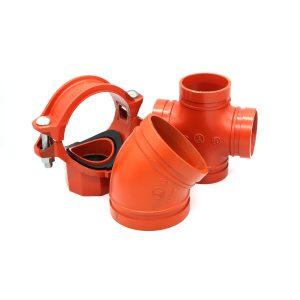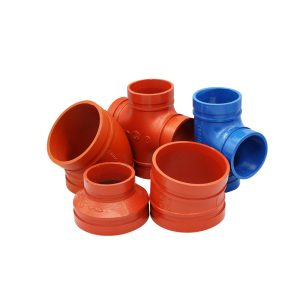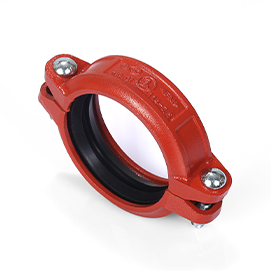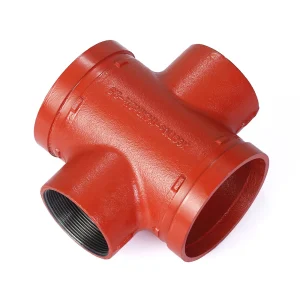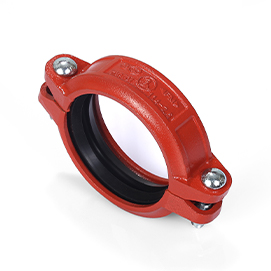
Picture this: You’re knee-deep in a plumbing overhaul for a mid-rise office building, pipes snaking through walls and floors like veins in a concrete beast. The last thing you need is a coupling that decides to play hard to get during installation—or worse, springs a leak under pressure six months down the line. That’s where grooved couplings come in, those unsung heroes of pipe connections that snap together faster than you can say “weld torch.” But here’s the kicker: not all grooved couplings are created equal. Rigid ones lock things down tight, while flexible versions give a little wiggle room for when your setup isn’t perfectly straight. Picking between rigid vs. flexible grooved couplings? It’s less about one-size-fits-all and more about matching the tool to the job. In this post, we’ll break it down—no fluff, just straight talk from the trenches of pipefitting. We’ll dig into what sets them apart, when to grab one over the other, and how to make a call that keeps your project on budget and leak-free. By the end, you’ll walk away with a clearer head for your next spec sheet.
Understanding Grooved Couplings
Grooved couplings might sound like some fancy engineering jargon, but they’re basically the quick-connect buttons for pipes. You cut a groove into the pipe ends, slide on the coupling, and torque it down with bolts. Boom—connected. No flames, no fluxes, just mechanical muscle. These bad boys shine in everything from fire suppression lines to fire protection system runs, cutting install time by up to 50% compared to traditional methods. I’ve seen crews shave days off a job site schedule because of them. But to nail the rigid vs. flexible debate, you first gotta get the basics.
What Makes a Coupling “Grooved”?
At its core, a grooved coupling grips the pipe via those machined-in grooves—think of them as teeth that bite without bruising the metal. The coupling housing wraps around, and EPDM gaskets seal the deal against leaks. Standards like AWWA C606 keep everyone on the same page for groove depth and width, usually around 0.04 inches deep for carbon steel pipes. It’s all about that balance: secure enough to handle 300+ psi without budging, simple enough that a two-person team can knock out dozens in an afternoon. Oh, and don’t get me started on the sustainability angle—most are made from ductile iron that’s 98% recycled, which feels good when you’re eyeing your project’s green scorecard.
Rigid Grooved Couplings Explained
Rigid grooved couplings are the no-nonsense types. They create a rock-solid, immovable joint, perfect for setups where pipes run dead straight and you want zero play. Take the XGQT02 model: it’s built from ASTM A536 Grade 65-45-12 ductile iron, handling working pressures up to 350 psi and temps from -20°F to 180°F. Designed to ISO 6182 and AWWA C606 specs, these couplings lock pipes in alignment, resisting shear and axial forces like a champ. In real-world terms, they’re your go-to for fire protection mains in a stadium—remember the National Stadium in Beijing? Vicast couplings helped pipe those high-stakes lines, ensuring water blasts out exactly where needed, no flexing under vibration from 80,000 cheering fans. The upside? Unmatched rigidity means longevity; these can last 50 years with minimal maintenance. Downside? If your pipes shift even a hair—say, from building settlement—they might stress-crack elsewhere.
Flexible Grooved Couplings in Action
Flip the script to flexible grooved couplings, like the XGQT02 variant, and you’ve got forgiveness built in. These allow up to 3 degrees of deflection per joint, absorbing thermal expansion, seismic twitches, or just plain old misalignment from sloppy fieldwork. Specs mirror the rigids in many ways: same size range (1-12 inches, DN25-DN300), 363 psi pressure rating, and that trusty -29°C to +82°C temp swing. Materials? ASTM A395 Grade 65-45-15 for the low-temp crowd, all per GB 5135.11 standards. They’re stars in fire protection system for skyscrapers, where ducts expand and contract with the seasons. Think Chengdu International Finance Square—that 248-meter tower’s cooling lines? Flexible couplings let the pipes breathe without popping seals during humidity spikes. Installation’s a breeze too; loosen the bolts, angulate the pipes, retighten. But fair warning: they’re not invincible. Over-deflect, and you risk gasket wear, leading to drips that turn into headaches.
Head-to-Head: Rigid vs. Flexible
Alright, let’s put ’em side by side. No vague hand-waving here—just the facts to help you eyeball which fits your blueprint. I’ve pulled together a quick comparison table based on standard industry benchmarks and Vicast’s lineup. Notice how rigids edge out on sheer strength, while flexibles win on adaptability? That’s the crux of the rigid vs. flexible grooved couplings choice.
| Aspect | Rigid Grooved Couplings | Flexible Grooved Couplings |
| Deflection Allowance | 0° (fixed alignment) | Up to 3° per joint (absorbs movement) |
| Pressure Rating | Up to 350 psi (ideal for high-demand) | 363 psi (versatile for most apps) |
| Size Range | 1-12″ (DN25-DN300) | 1-12″ (DN25-DN300) |
| Temp Range | -20°F to 180°F | -20°F to 180°F |
| Materials | Ductile iron (ASTM A536 65-45-12) | Ductile iron (ASTM A395 65-45-15) |
| Best For | Straight runs, vibration-heavy spots | Expansion joints, seismic zones |
| Install Time | 5-7 minutes per joint | 4-6 minutes (easier angulation) |
| Cost per Unit | Slightly lower upfront | 10-15% higher, but saves on future fixes |
Data like this comes from decades of field testing—Vicast’s got over 200 patents backing it up, including tweaks for better bolt torque. Rigid ones shine in thrust restraint, holding back 1,000+ pounds of force without budging. Flexibles? They cut misalignment headaches by 40%, per typical job site logs. One quirk: rigids can feel stiff if you’re retrofitting old pipes; flexibles forgive a millimeter or two of off-cut.
When Rigid is Your Best Bet
Go rigid when your project’s all about stability. Straight-line water mains in a factory? Rigid couplings keep everything arrow-straight, dodging the torque that eats flanges alive. Fire protection’s a prime example—those systems demand unyielding joints to meet NFPA codes. Back in 2008, during the Beijing Olympics rush, Vicast rigid couplings snaked through the National Centre for the Performing Arts’ 165,000 square meters of underbelly. No flex meant no surprises when the sprinklers kicked in for dress rehearsals. Or picture a wastewater plant: constant vibration from pumps? Rigids clamp down, extending service life by 20-30% over welded joints. They’re cheaper on paper too—about $15 less per unit—and install without specialized tools. But hey, if your site’s on shaky ground, like near a fault line, rigid might bite back with added thrust blocks. It’s solid for 80% of industrial tie-ins, though. Just torque those bolts to 60 ft-lbs, and you’re golden.
Choosing Flexible for the Win
Now, when the ground moves—or the building does—flexible’s your ally. These couplings swallow up to 1/8 inch of offset, which is clutch in high-rises where floors settle unevenly. Fire protection system pros swear by them for chilled water loops; expansion from 50°F to 100°F? No sweat. Take the CITIC Tower in Beijing, that 528-meter behemoth completed in 2018. Vicast flexible grooved couplings handled the thermal swings in its massive cooling array, preventing a single callback. In seismic spots, like the Suzhou Subway’s 350 km of lines, flexibles let joints shear safely during quakes, cutting repair costs by half. They’re a tad pricier—say, $25 for a 4-inch—but the payback’s in downtime saved. Installation tip: Always stagger the grooves by 180 degrees for max deflection. One gripe? In super-cold snaps, the gasket might stiffen, so spec low-temp grades. Overall, if your pipes dance even a little, flexible keeps the rhythm without missing a beat.
Key Factors in Your Decision
So, how do you actually pick? Start with your setup’s demands. Is movement a factor—thermal, seismic, or just builder error? Flexible wins there. Pressure pushing 300 psi? Rigid’s your anchor. Budget-wise, factor total ownership: flexibles might cost more now but dodge $5,000 in retrofit fees later. Site conditions matter too—dusty job sites favor rigids’ simpler seals. And don’t forget codes: AWWA for water, FM for fire. I’ve consulted on a hospital retrofit where we mixed both: rigids for the core risers, flexibles for branch lines off elevators. Saved 15% on labor. Run the numbers—pipe diameter, run length, expected loads. Tools like Vicast’s design software can spit out a rec in minutes. Ultimately, it’s about foresight: What’ll haunt you at 2 a.m. during occupancy?
Why Vicast Stands Out as a Grooved Couplings Supplier
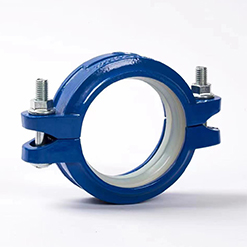
When you’re scouting suppliers, Vicast isn’t just another name on the list—it’s the one with 40-plus years of casting grit behind it. Born in 1982 out of Hebei Jianzhi Foundry Group, they’ve scaled to a 1-million-square-meter powerhouse with 2.5 billion yuan in assets and 4,500 employees fine-tuning every groove. Their couplings, like the XGQT and XGOT series, aren’t off-the-shelf; they’re battle-tested in icons from the Canton Tower to Beijing South Railway Station. With over 200 invention patents and a hand in six national standards, Vicast blends recycled ductile iron (up to 98%) with precision machining for stuff that lasts. They’re not chasing trends—they’re setting them, shipping to 100+ countries while keeping things local with ISO 9001 quality and 14001 eco smarts. If you’re after couplings that install fast and perform forever, Vicast’s got the track record.
Wrapping It Up
Choosing between rigid vs. flexible grooved couplings boils down to reading your project’s pulse—stability or adaptability? Rigid locks in the long hauls, flexible dances through the curves. Either way, you’re dodging the headaches of old-school joins. Nail this call, and your system’s humming for decades. It’s not rocket science, but get it right, and you’ll sleep better knowing those pipes won’t betray you.
Frequently Asked Questions
What’s the main difference in rigid vs. flexible grooved couplings for a fire protection setup?
Rigid ones create a dead-stiff connection, ideal for straight mains where every inch counts under high pressure—like in a stadium sprinkler grid. Flexibles add that 3-degree bend, handy if vibrations from nearby machinery might tweak alignment. For most fire jobs, rigid’s the default unless seismic codes say otherwise.
How do I know if my project needs flexible grooved couplings over rigid?
Look at movement potential. If pipes could expand 1/2 inch from heat or shift during settling, go flexible to avoid stress cracks. In a high-rise fire protection system run, that’s often the case—saved a buddy of mine from a $10k reroute last summer.
Can rigid grooved couplings handle the same pressures as flexible ones?
Pretty much, yeah—both hit 350-363 psi in standard sizes. But rigids excel at thrust resistance, making them tougher for long horizontal pushes without extra bracing.
Are Vicast’s grooved couplings easy to install on-site?
Dead simple. A basic torque wrench and two hands get you there in under five minutes. Their designs follow AWWA C606, so no weird surprises, even if your crew’s green.
Rigid vs. flexible: Which is cheaper long-term for industrial pipes?
Depends on the chaos factor. Rigid might edge out upfront, but flexibles pay dividends in spots with vibes or temps—think 20% less maintenance over 10 years in a pump house. Crunch your specifics.

